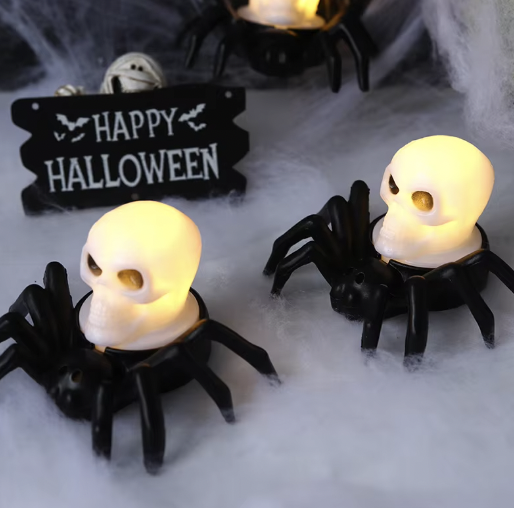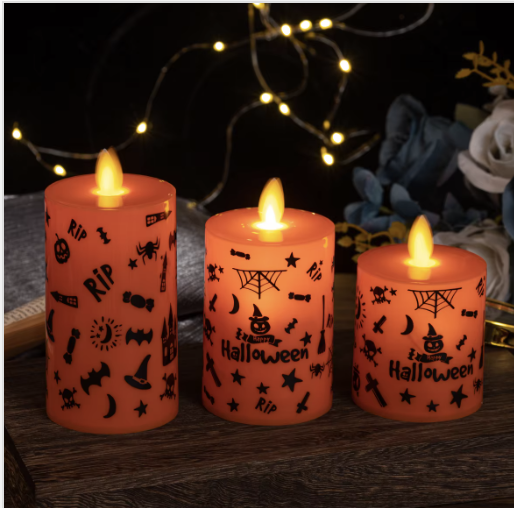The Emotional Impact of Festival Decorative Lights
How Lights Trigger Dopamine Release
Bright, colorful lights really affect how our brains work because they boost dopamine levels, which we know makes people feel good and gives them a sense of reward. When someone finds themselves in places full of visual stimulation, their brain starts firing in the reward areas, releasing dopamine that lifts moods pretty noticeably. Some research shows that colors that pop and change around us actually shape our emotions quite a bit. Even those cool blue tones at festivals tend to make folks feel calmer somehow. Most psychologists will tell anyone who asks that lighting in general affects how we feel emotionally. It gives our eyes signals that trigger happy reactions similar to what happens when sunlight pours through windows on a nice day. That's why festival lights aren't just there for show. They actually help create happiness and a feeling of being comfortable in spaces where people gather.
Nostalgia and Memory Activation
Festival lights really bring back memories for most people. They make us think about old times when we celebrated together with family and friends. The way they look - all those different colors and patterns blinking in the night sky - reminds folks of their childhood holidays or maybe some special event from years ago. People get this warm feeling inside when they see them. Some research shows that our brains react strongly to visual stuff like lights, which helps us remember happy times again. When someone looks at festival lights, it's common to start thinking about good old days. This connection between what we see now and what happened before gives life a kind of rhythm that makes sense emotionally. It's why so many communities keep traditions alive through these displays year after year.
Combatting Seasonal Affective Disorder (SAD)
A lot of people struggle with Seasonal Affective Disorder (SAD) when days get shorter and darker because there's just not enough sunlight around. The bright lights at holiday festivals actually work pretty well as a kind of treatment, acting somewhat like the sun itself and helping ease those SAD symptoms. Research indicates that being exposed to these vibrant, glowing displays boosts serotonin levels in the brain, something that really matters for keeping moods stable and maintaining good mental health. People often mention how seeing all those festival lights makes them feel better during winter blues, giving their minds a lift that contributes to general wellness. Beyond just looking nice, these lights do something important for our psyche too, creating feelings of warmth and joy even when it's freezing outside and everything seems gloomy.
Key Elements of Festival Lights in Mood Creation
Soft Lighting for Warm Atmospheres
The kind of gentle, spread-out light we see at festivals really makes all the difference when it comes to setting up a welcoming vibe. Think about those lanterns hanging around music events or the warm glows along food stalls during cultural celebrations. These lighting setups wrap everything in a pleasant glow that gets people talking to each other and builds that festival camaraderie everyone loves. The softer lights typically aren't super bright, which actually works better for creating moods and making spaces feel more intimate. Festival organizers know this trick well because they want their guests to relax and connect naturally. When someone walks into a space lit just right, they tend to stay longer and engage more with others around them. That's why so many event planners go through extra effort to get the lighting just right – it affects how people interact almost as much as what activities are happening on stage.
Color Psychology in Festival Lights
The way colors affect our feelings is something we all experience, especially when it comes to festival lights. Take red for example it really gets people excited and creates that sense of something happening now. Blue on the other hand usually makes folks feel relaxed and at ease. What's interesting though is how different cultures see colors completely differently. In some places, what means good luck in one country might signal bad news somewhere else. Look at Diwali celebrations in India where they light up everything with bright reds and golds because those colors stand for happiness and wealth. Contrast that with Hanukkah where blue and white dominate the decorations, representing calmness and clean living. When planners get how colors work emotionally, they can design festivals that actually connect with people deep down, making the whole event memorable for everyone involved.
Dynamic Effects: Flashing and Motion Patterns
Flashing lights and moving patterns really boost excitement at festivals and grab people's attention too. When organizers set up those animated light shows, they completely change how attendees feel during the event, making some pretty amazing memories. Lighting pros tell us these effects work because they copy things we see in nature that get our brains going, which helps everyone feel more involved in what's happening around them. Take Tomorrowland for instance they go all out with lights that flash right along with the music beat, keeping crowds totally hooked and raising the overall vibe of the whole festival. As tech keeps improving, there are now so many new ways to play with light that festival planners can keep coming up with fresh ideas every year without getting stuck in a rut.
Interactive Music-Synchronized Displays
When lights dance to music at festivals, they really boost how people feel emotionally during the event. The way sound and visual effects work together just amplifies everything, creating this awesome shared experience where everyone feels connected. Take Electric Daisy Carnival for instance it's known worldwide for those incredible light shows that match beats perfectly. People get totally sucked into these performances because the timing is spot on. Technology keeps getting better too, so now organizers can mix lights and music in ways we never thought possible before. This means festivalgoers stay engaged throughout the whole thing and leave with memories that stick around way past the last note played.
Designing Indoor and Outdoor Lighting Displays
Strategic Placement for Visual Excitement
Getting the lighting right really matters when setting up festivals inside or outside spaces. Good lighting doesn't just look nice it actually directs where people look and how they feel during the event. Festivals that stand out usually have lighting plans that consider where people will be standing and sitting so everyone gets a good view. Take Vivid Sydney for instance the way they arrange those big light displays works with the city's buildings and waterfront instead of fighting against them, making everything look absolutely stunning at night. When planners think about sightlines first, it means no one ends up blocked from seeing something cool happening on stage or in the distance. People tend to stick around longer too because they aren't constantly adjusting their position to catch glimpses between pillars or under bad angles.
Layering Techniques for Depth and Dimension
When festivals layer various light sources, they bring so much more depth and dimension to their displays, making everything look way better than just flat illumination. Designers mix things up by using ambient lighting for background atmosphere, task lighting to point out particular spots or artists on stage, and accent lighting that really makes certain elements pop visually. Take Electric Daisy Carnival as an example where soft background lights set the overall vibe, brighter lights draw attention to dance floors or main acts, and special effects lighting creates those wow moments when something unexpected happens onstage. The whole setup grabs people's attention from all angles, creating experiences that feel immersive rather than just watching from afar. Attendees don't just see these displays; they get pulled right into the middle of the action through this layered lighting strategy.
Energy-Efficient LED Solutions
Festival lighting got a major upgrade with LED technology coming on board, all thanks to how much better they are when it comes to saving energy and being kind to the environment. Compared to old fashioned lights, LEDs eat up far less power and last way longer too, which is why most festival organizers now go for them whenever possible. The numbers back this up pretty well actually – some studies show these little bulbs can cut down on electricity usage by around three quarters according to what I read from government sources somewhere. Take Glastonbury for instance, one of those big music festivals where they've started using all sorts of creative LED setups throughout their grounds. What we see happening here is proof positive that switching over to efficient lighting saves money while creating a greener vibe overall during events. Pretty cool really, since nobody wants their party to cost the Earth literally speaking.

Cultural Significance of Festival Decorative Lights
Symbolism Across Global Celebrations
The way people light up their festivals tells deep stories about who they are. Take Diwali for example when millions of homes glow with tiny oil lamps called diyas. This isn't just pretty to look at. The lights represent victory of good over bad, kind of like beating back the darkness both literally and figuratively. When Christmas comes around, those strings of colored bulbs on houses and trees do more than brighten up snowy yards. They mark the night stars supposedly guided wise men to baby Jesus, bringing warmth to cold December evenings. Then there's Hanukkah where families gather to light one extra candle each night on the menorah, remembering how ancient priests found oil lasting eight days instead of one. These glowing traditions aren't random decorations. They carry centuries old tales passed down through generations. People light things up because it brings folks together, creates shared memories, and reminds everyone they're part of something bigger than themselves.
Strengthening Community Bonds Through Shared Displays
When communities work together on lighting displays for festivals, it really brings everyone closer and creates that special feeling of togetherness. All over the globe, towns get creative with lights during big events such as Lunar New Year celebrations, Halloween nights, and neighborhood fairs. People team up to make amazing displays that turn parks and streets into magical places filled with color and brightness. What happens next is pretty cool too. Folks start talking to each other about what they see, sharing stories about how the lights were made, and just generally enjoying being part of something bigger than themselves. Light installations actually create these intimate moments at festivals where strangers become friends again after years apart. Festivals with lots of lights tend to bring different kinds of people together, which helps build stronger connections within the community while keeping traditions alive. And when neighbors swap tips on making their own light shows, it builds a real sense of connection and makes everyone appreciate the variety of cultures right there in their own town.
FAQ Section
Why do festival lights trigger dopamine release?
Festival lights trigger dopamine release because bright and colorful lights stimulate the brain's reward center, which enhances mood and promotes a sense of pleasure.
How do festival lights help with Seasonal Affective Disorder (SAD)?
Festival lights can alleviate SAD by mimicking natural light and boosting serotonin levels, which are essential for mood regulation during darker months.
What role do colors play in festival lights?
Colors in festival lights can evoke different emotional responses. For example, red often signifies excitement while blue can invoke tranquility.
How do interactive music-synchronized displays enhance festival experiences?
These displays create a multisensory experience by combining visuals and sound, intensifying emotions and fostering a shared sense of excitement among attendees.
What is the cultural significance of festival lights?
Festival lights carry cultural meanings, symbolizing hope, celebration, and community ties, like Diwali's lights signifying the triumph of good over evil.
 EN
EN
 AR
AR
 FR
FR
 DE
DE
 IT
IT
 JA
JA
 KO
KO
 PT
PT
 RU
RU
 ES
ES
 LV
LV
 LT
LT
 VI
VI
 TH
TH
 MS
MS


